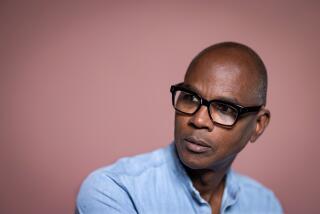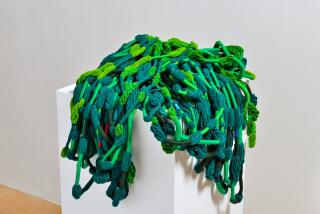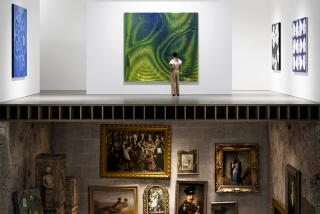Keeping an eye on the future in art
SUPERDEALER Larry Gagosian talks about the “thin,” speculative art market of the ‘80s but isn’t worried about a bubble as prices heat up this time around.
Connecticut collector Peter M. Brant says he keeps an eye out for artists the critics don’t like, since it’s often a sign something interesting is happening with their work.
New York art dealer Barbara Gladstone, who helped build Matthew Barney’s career, laments the shallow pursuit of younger and younger artists.
And Marc Glimsher of New York’s PaceWildenstein Gallery says the contemporary art market isn’t really a market at all, since it’s too small and eccentric to follow conventional laws of supply and demand.
They’re among the 40 or so art world figures who make brief appearances in “Collecting Contemporary,” a new book from Taschen by New York entrepreneur and collector Adam Lindemann.
Lavishly illustrated and with a striking Richard Phillips nude on its cover, the book, intended as a how-to for potential collectors, gathers perspectives from across the field.
“In the beginning it was like my own travel book, of the art world,” says Lindemann, who built the book from interviews with dealers, collectors, museum professionals, art consultants and auction house experts. Most are New York based, but he includes interviews with Los Angeles collector Eli Broad -- who discusses his unlikely friendship with Jeff Koons and says he collects because it’s “intellectually stimulating” -- an emphasis on the “Young British Artist” phenomenon, and works by Japanese figures like Takashi Murakami and Mariko Mori.
Lindemann counsels those eager to join the collecting ranks to proceed with patience. “The best thing to do is look at as much as possible, with an open mind,” he says. “Don’t be too rash to judge right away; your opinions will change as you educate your eye.” He admits it’s happened to him.
“Two artists I didn’t fall in love with originally are now market favorites: Richard Prince and Christopher Wool. They were an acquired taste. Another is Anselm Reyle,” a German artist whose works he describes as “a redefinition of ‘70s decorative work” that takes off from the work of other artists.
“I’d been looking at his work for four years. Then my wife forced me to buy a painting, and after looking at it for two months I realized she’s right -- I was wrong. Sometimes looking at a work of art can take months or years.”
Lindemann’s advice: Get to know an artist’s body of work before you buy.
“You need to try to understand -- What are they trying to say? I think that’s the most important part of collecting.”
*
More to Read
The biggest entertainment stories
Get our big stories about Hollywood, film, television, music, arts, culture and more right in your inbox as soon as they publish.
You may occasionally receive promotional content from the Los Angeles Times.










